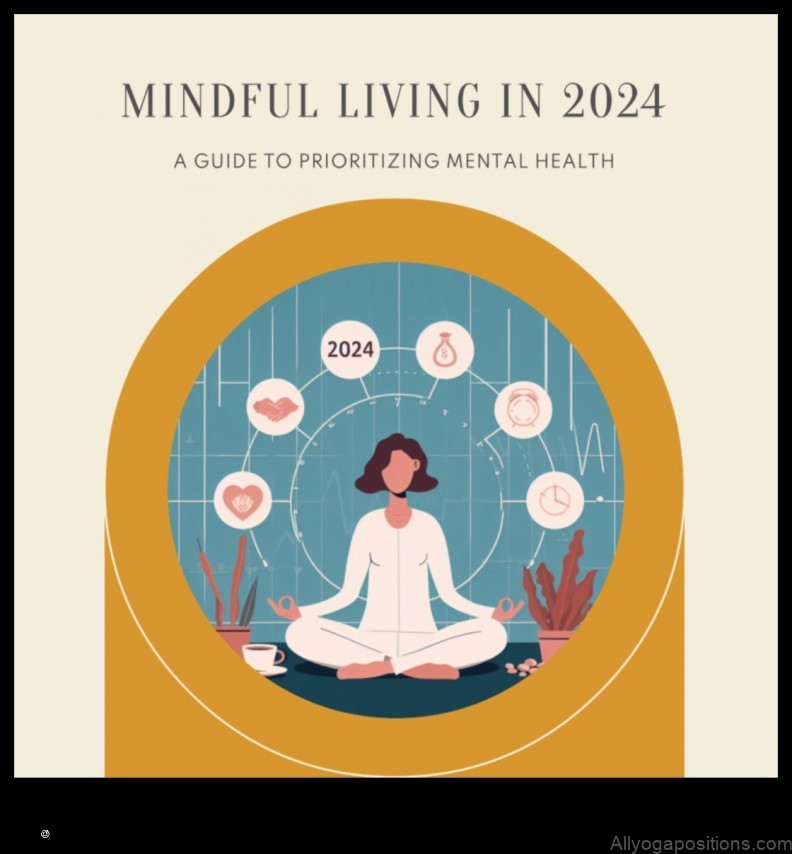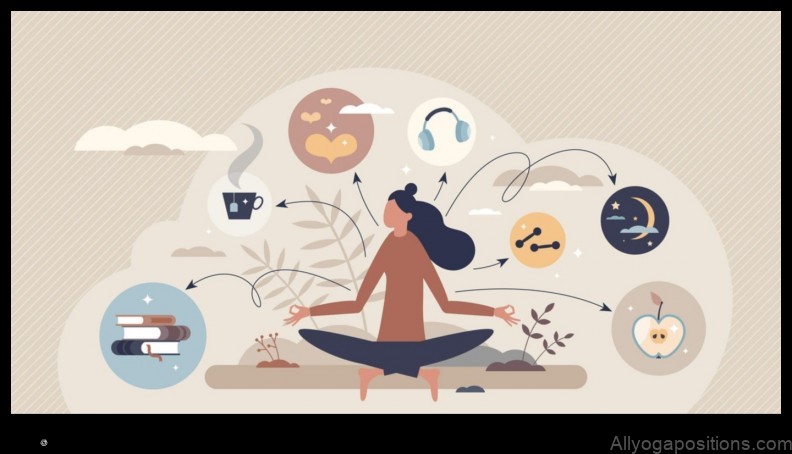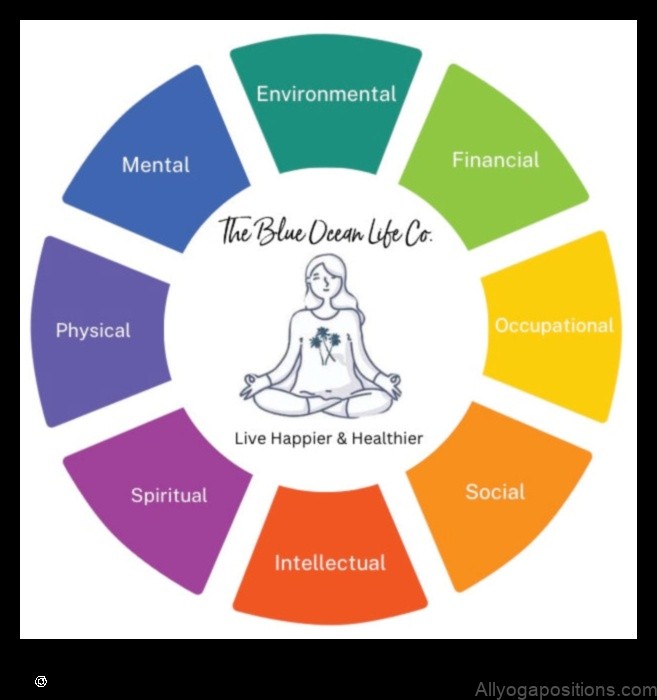
Meditation and Mindful Living: A Holistic Approach to Well-Being
Holistic meditation is a type of meditation that focuses on the whole person, including the mind, body, and spirit. It is a way to connect with your inner self and experience a sense of peace and well-being.
There are many benefits to holistic meditation, including:
- Reduced stress and anxiety
- Improved sleep
- Increased focus and concentration
- Improved mood
- Boosted immune system
- Reduced pain
If you are interested in learning more about holistic meditation, there are many resources available, such as books, articles, and online courses. You can also find local meditation groups or teachers who can help you get started.
Holistic meditation is a powerful tool that can help you improve your overall well-being. If you are looking for a way to reduce stress, improve your mood, and connect with your inner self, I encourage you to give holistic meditation a try.

How to Practice Holistic Meditation
Holistic meditation is a simple practice that anyone can do. Here are a few steps to get you started:
- Find a quiet place where you can relax and won’t be disturbed.
- Sit in a comfortable position, either cross-legged on the floor or in a chair with your feet flat on the ground.
- Close your eyes and take a few deep breaths.
- Focus on your breath as it flows in and out of your body.
- As thoughts come into your mind, let them go and gently return your attention to your breath.
- Continue to meditate for as long as you like, or until you feel relaxed and at peace.
It may take some time to get used to meditation, but with practice, you will be able to relax and focus more easily. If you find it difficult to sit still, you can try walking meditation or yoga. You can also listen to guided meditations or read books about meditation to learn more about the practice.
Common Obstacles to Holistic Meditation and How to Overcome Them
There are a few common obstacles that people face when they first start meditating. Here are some tips for overcoming them:
- Getting started. The hardest part of meditation is often just getting started. If you find it difficult to sit still, try walking meditation or yoga. You can also listen to guided meditations or read books about meditation to learn more about the practice.
- Distractions. It is normal to have distractions come up during meditation. When this happens, simply acknowledge the distraction and let it go. Gently return your attention to your breath or your meditation object.
- Negative thoughts. It is also normal to have negative thoughts come up during meditation. When this happens, simply acknowledge the thought and let it go. Do not try to suppress or fight the thought.
- Giving up. Meditation is a practice that takes time and dedication. If you find it difficult to meditate, don’t give up. Just keep practicing and you will eventually see results.
Meditation is a lifelong practice. It is not something that you can master overnight. Just keep practicing and you will eventually see results.

How to Integrate Holistic Meditation into Your Daily Life
Holistic meditation is a powerful tool that can be used to improve your overall well-being. Here are a few tips for integrating meditation into your daily life:
- Make time for meditation. The best way to make meditation a part of your life is to set aside a specific time each day to practice. Even a few minutes of meditation can make a big difference.
- Find a comfortable place to meditate. Find a place where you can relax and won’t be disturbed. This could be your bedroom, a yoga studio, or even a park.
- Make it a habit
Feature Answer Meditation A holistic approach to meditation that incorporates mind, body, and spirit Mindfulness A state of awareness in which you are present and attentive to the moment Holistic health An approach to health that takes into account the physical, mental, emotional, and spiritual aspects of a person Well-being A state of being that is characterized by physical, mental, and emotional health Stress management A set of techniques that can help you manage stress and improve your overall well-being II. Benefits of holistic meditation
Holistic meditation has been shown to have a number of benefits for physical, mental, and emotional health. Some of the benefits of holistic meditation include:
* Reduced stress and anxiety
* Improved sleep
* Increased focus and concentration
* Reduced pain
* Improved mood
* Enhanced creativity
* Increased self-awareness
* Increased compassion for others
* A deeper sense of connection to the present moment
* A greater sense of peace and well-beingIII. How to practice holistic meditation
Holistic meditation is a type of meditation that focuses on the whole person, including the mind, body, and spirit. It is a gentle and non-judgmental practice that can help you to relax, reduce stress, and improve your overall well-being.
There are many different ways to practice holistic meditation, but some of the most common methods include:
- Mindfulness meditation
- Body scan meditation
- Guided meditation
- Mantra meditation
To get started with holistic meditation, you can find a quiet place where you won’t be disturbed. Sit in a comfortable position and close your eyes. Take a few deep breaths and relax your body.
Once you are relaxed, you can begin to focus on your breath. Notice the feeling of the air as it flows in and out of your lungs. You can also focus on your body, or on a specific mantra or image.
Continue to meditate for as long as you like. When you are finished, open your eyes and slowly come back to your surroundings.
Holistic meditation is a simple and effective way to improve your overall well-being. It can help you to relax, reduce stress, and increase your awareness of yourself and the world around you.
IV. Common obstacles to holistic meditation and how to overcome them
There are a number of common obstacles that people face when trying to practice holistic meditation. These obstacles can include:
- Lack of time: Many people feel like they don’t have enough time to meditate. This is a common obstacle, but it is important to remember that even a few minutes of meditation can be beneficial. If you’re short on time, try to meditate for just a few minutes each day, or even a few times per week.
- Difficulty sitting still: Some people find it difficult to sit still for long periods of time. If this is the case for you, try meditating while lying down, or while walking or doing another activity. You can also try using guided meditations, which can help you to focus on your breath and relax your body.
- Distractions: It’s normal to experience distractions during meditation. This is because your mind is naturally active. When you notice a distraction, simply acknowledge it and let it go. Don’t try to force yourself to stop thinking about the distraction. Just return your attention to your breath or to the object of your meditation.
- Negative thoughts: It’s also normal to experience negative thoughts during meditation. This is because meditation can bring up repressed emotions and thoughts. When you notice a negative thought, simply acknowledge it and let it go. Don’t try to fight the thought or to change it. Just return your attention to your breath or to the object of your meditation.
If you’re struggling with any of these obstacles, don’t give up. Just keep practicing and you will eventually overcome them. Meditation is a skill that takes time and practice to develop. The more you practice, the easier it will become.
V. How to integrate holistic meditation into your daily life
Holistic meditation can be a powerful tool for improving your overall well-being. However, it is important to find a way to integrate it into your daily life in a way that is sustainable and enjoyable. Here are a few tips:
- Start by setting aside a small amount of time each day for meditation. Even 5 or 10 minutes can make a big difference.
- Choose a time of day when you are most likely to be able to relax and focus.
- Find a quiet place where you will not be disturbed.
- Wear comfortable clothing that will not restrict your movement.
- Close your eyes and focus on your breath.
- Bring your attention to the present moment, and let go of any thoughts or worries that come up.
- If your mind wanders, gently bring your attention back to your breath.
- Continue meditating for the amount of time you set aside.
- When you are finished, take a few deep breaths and slowly open your eyes.
Over time, you will find that it becomes easier to meditate for longer periods of time. You will also start to notice the benefits of meditation in your everyday life. You may feel more relaxed, focused, and at peace. You may also experience improved sleep, reduced stress levels, and better overall health.
Holistic meditation is a powerful tool that can help you to live a happier, healthier, and more fulfilling life. By incorporating it into your daily life, you can reap the benefits of meditation for years to come.
II. Benefits of holistic meditation
Holistic meditation has been shown to have a number of benefits for both physical and mental health. These benefits include:
- Reduced stress and anxiety
- Improved mood and well-being
- Increased focus and concentration
- Improved sleep
- Reduced pain
- Enhanced immune function
- Reduced inflammation
- Improved cardiovascular health
- Reduced risk of chronic diseases
These benefits are due to the fact that holistic meditation helps to calm the mind, body, and spirit. It can also help to improve our relationships with ourselves and others. When we meditate, we are able to connect with our inner selves and become more aware of our thoughts, feelings, and emotions. This can lead to a greater sense of peace and well-being. Additionally, meditation can help us to develop compassion and empathy for others. This can lead to more positive and fulfilling relationships.
VII. History of holistic meditation
Holistic meditation has been practiced for centuries in various cultures around the world. Some of the earliest known forms of holistic meditation include yoga, tai chi, and qigong. These practices originated in India, China, and other parts of Asia, and they have been used for centuries to promote physical and mental well-being.
In the West, holistic meditation became more popular in the 1960s and 1970s, as people began to explore Eastern philosophies and practices. Today, holistic meditation is practiced by people of all cultures and backgrounds. It is a powerful tool for stress management, relaxation, and personal growth.
There are many different types of holistic meditation, and each one has its own unique benefits. Some of the most popular types of holistic meditation include:
- Mindfulness meditation
- Transcendental meditation
- Vipassana meditation
- Zen meditation
Holistic meditation can be practiced in a variety of settings, including at home, in a yoga studio, or in a meditation retreat. It is a simple practice that anyone can learn, and it can be a powerful tool for improving your health and well-being.
Different types of holistic meditation
There are many different types of holistic meditation, each with its own unique benefits. Some of the most popular types of holistic meditation include:
- Mindfulness meditation
- Transcendental meditation
- Vipassana meditation
- Qigong
- Tai chi
Each type of meditation has its own unique benefits, and the best type of meditation for you will depend on your individual needs and preferences. If you are new to meditation, it is a good idea to experiment with different types of meditation to see what works best for you.
Here is a brief overview of some of the most popular types of holistic meditation:
- Mindfulness meditation is a type of meditation that focuses on bringing awareness to the present moment. It is often practiced by sitting in a comfortable position and focusing on the breath. Mindfulness meditation can help to improve focus, reduce stress, and promote relaxation.
- Transcendental meditation is a type of meditation that involves repeating a mantra or sound. It is often practiced while sitting in a comfortable position with the eyes closed. Transcendental meditation can help to improve focus, reduce stress, and promote relaxation.
- Vipassana meditation is a type of meditation that involves observing the breath and the body without judgment. It is often practiced while sitting in a comfortable position with the eyes closed. Vipassana meditation can help to improve focus, reduce stress, and promote relaxation.
- Qigong is a type of meditation that involves gentle movements and breathing exercises. It is often practiced while standing or sitting in a comfortable position. Qigong can help to improve circulation, reduce stress, and promote relaxation.
- Tai chi is a type of meditation that involves slow, flowing movements. It is often practiced while standing or sitting in a comfortable position. Tai chi can help to improve balance, flexibility, and coordination.
If you are interested in learning more about holistic meditation, there are many resources available online and in libraries. You can also find classes and workshops in your local community.
IX. Where to learn holistic meditation There are many different ways to learn holistic meditation. You can find classes and workshops at your local community center, yoga studio, or meditation center. You can also find online courses and programs. Some popular resources for learning holistic meditation include:
* The Mindfulness Meditation App: This app offers a variety of guided meditations for beginners and experienced meditators.
* Headspace: This app offers a subscription-based service that provides access to hundreds of guided meditations, as well as sleep stories and other mindfulness tools.
* Insight Timer: This free app offers a library of over 100,000 meditations, as well as a community forum where you can connect with other meditators.
* The Mindful Living Project: This website offers a free online course on mindfulness meditation.
* The Center for Mindfulness: This organization offers a variety of mindfulness-based programs, including in-person classes and online courses.No matter how you choose to learn holistic meditation, the most important thing is to find a method that works for you and to practice regularly. With consistent practice, you can experience the many benefits of meditation, including improved mental health, reduced stress, and increased well-being.
FAQ
Q: What is holistic meditation?
A: Holistic meditation is a type of meditation that focuses on the whole person, including the mind, body, and spirit. It is a practice that can help to promote relaxation, reduce stress, improve focus, and increase mindfulness.
Q: What are the benefits of holistic meditation?
A: The benefits of holistic meditation include:
* Reduced stress and anxiety
* Improved sleep
* Increased focus and concentration
* Enhanced creativity
* Increased mindfulness
* Improved overall well-beingQ: How do I practice holistic meditation?
A: There are many different ways to practice holistic meditation. Some common methods include:
* Sitting in a comfortable position and focusing on your breath
* Visualizing a calming scene or object
* Listening to soothing music
* Practicing yoga or tai chi
* Spending time in natureTable of Contents
Maybe You Like Them Too
- Peaceful Presence Yoga for TranquilityA Guide to Finding Stillness and Balance in a Chaotic World
- Standing Half Forward Bend A Gentle Stretch for the Spine
- Yoga for Better Posture Align Your Spine and Improve Your Overall Health
- The Eight Limbs of Yoga A Path to Enlightenment
- The Art of Mindful Leadership Meditation in the BoardroomHow to Maximize Productivity, Creativity, and Well-Being at Work
